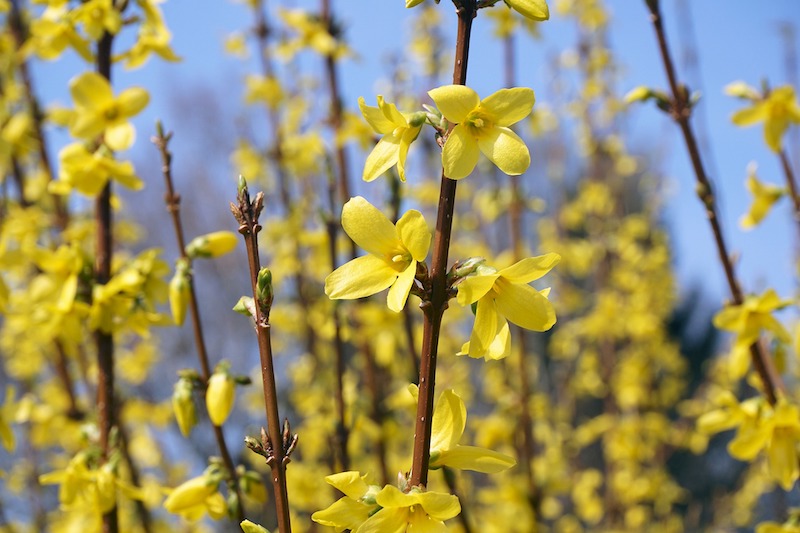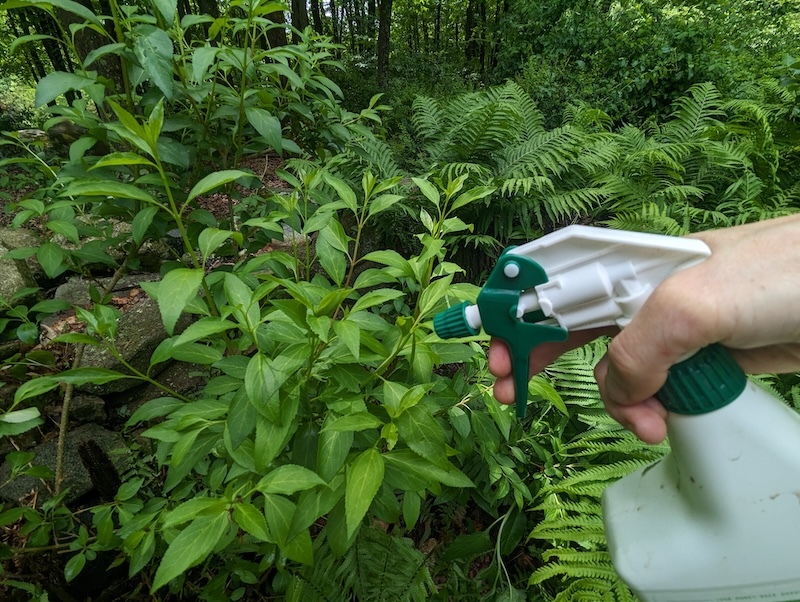If you’re wondering if deer like Forsythias, the answer is not really. This flowering perennial shrub grows mainly in USDA zones 5 through 8, although some cultivars are hardy down to zones 3 and 4. This shrub is one of the first plants to bloom in the spring, and it boasts bold yellow flowers that welcome in warm weather. Forsythias are suitable for gardeners who routinely lose plants to foraging animals. Most animals, including deer, tend to leave Forsythias alone so that you can enjoy the golden yellow flowers in the spring and the green foliage during the summer and fall.

The flowers of the Forsythia shrub have a bitter taste, which is likely why deer and other animals do not bother eating it. Other more enticing food sources are available during the spring, summer, and early fall when this plant is covered in flowers or leaves. Also, Forsythias are deciduous. The barren branches do not offer much for hungry animals during the winter. According to Rutgers University, this plant is Seldom Severely Damaged on their rating scale from Rarely Damaged to Frequently Severely Damaged.
| Rarely Damaged |
| Seldom Severely Damaged |
| Occasionally Severely Damaged |
| Frequently Severely Damaged |
Keeping Deer Away From Forsythias
Most gardeners do not find it necessary to keep deer and other animals away from Forsythias since animals tend to leave it alone. In the rare event that an animal shows interest in this bush, fencing and scent-based repellents can protect the plant. Forsythias are generally recommended as a plant to feature if you have large deer populations since it is not a preferred food source. Animals will eat anything if times are tough, but the Forsythia bush is not a likely candidate for hungry animals.

Will Forsythias Come Back After Deer Eat Them?
Damaged Forsythias can bounce back after being eaten by animals. This bush blooms on old wood, so you may miss out on a bloom cycle if the plant is damaged. Forsythias push out new branches in the summer after the flowers fade. This year’s new growth is next year’s old growth, so if an animal nibbles the new shoots, fewer flowers may come in spring. With time, sun, and fertilizer, the shrub should recover and return to being a springtime focal point.
Sources: Rutgers New Jersey Agricultural Experiment Station ‘Landscape Plants Rated by Deer Resistance’ 2018
 |
Author Alison Cotsonas - Published 09-01-2022 |
